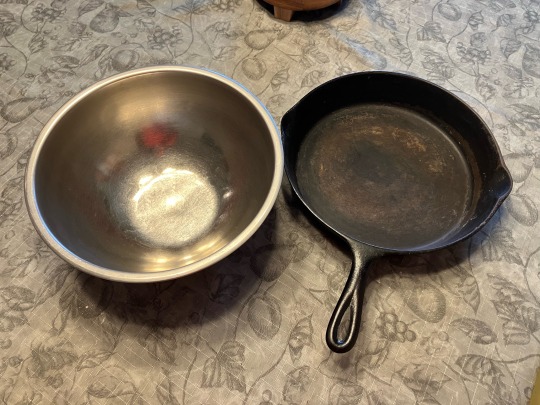#the skillet will be cleaned up in the electrolysis tank
Explore tagged Tumblr posts
Text

Thrifting for the kitchen, Vollrath mixing bowl and vintage Lodge skillet. These are some of the higher quality cookware that I keep an eye out for.

Vollrath still makes high quality stainless steel cookware in Sheboygan, WI, and will almost always be well marked.

The skillet is a No. 8 Lodge from about the 1940s. These were ‘unmarked’, as in no manufacturer’s label, had a heat ring with three notches, and were ground smooth on the cooking surface.
#the skillet will be cleaned up in the electrolysis tank#I use a vollrath stainless measuring cup just about every day#thrifting#thrifstorefinds#stainless steel#mixing bowl#vollrath#cast iron#cast iron skillet#lodge#vintage#vintage cast iron
2 notes
·
View notes